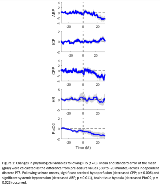Neurophysiologic Derangements and Clinical Outcomes Associated with Pediatric Post-Traumatic Seizures
Abstract number :
2.022
Submission category :
3. Neurophysiology / 3B. ICU EEG
Year :
2018
Submission ID :
501893
Source :
www.aesnet.org
Presentation date :
12/2/2018 4:04:48 PM
Published date :
Nov 5, 2018, 18:00 PM
Authors :
Brian Leonard Appavu, Barrow Neurological Institute at Phoenix Children's Hospital; Stephen Foldes, Barrow Neurological Institute at Phoenix Children's Hospital; Austin Jacobson, Barrow Neurological Institute at Phoenix Children's Hospital; Brian Burrows,
Rationale: Post-traumatic seizures (PTS) represent a known acute phenomenon after pediatric severe traumatic brain injury (TBI) and have been associated with poor outcome. While pediatric PTS are postulated to be causative of secondary brain injury, their effects on cerebral physiology have been underexplored. In this study, we aimed to characterize neurophysiological changes and clinical outcomes associated with pediatric PTS. Methods: This retrospective analysis consists of pediatric patients with severe TBI who underwent multimodality monitoring that included continuous electroencephalography (EEG) and invasive measurements of arterial blood pressure (ABP), partial pressure of oxygen in interstitial brain tissue (PbtO2), cerebral perfusion pressure (CPP) and intracranial pressure (ICP). Patient data was collected from August 1, 2014 to January 18th, 2018 at a single level I pediatric trauma center. PTS were identified retrospectively by screening continuous EEG recordings. Outcome was determined using the Pediatric Glasgow Coma Score – Extended (GOSE-Peds) at 6 months. Statistical analysis comparing patients with and without PTS used the non-parametric Mann-Whitney U-test. Wilcoxon signed rank test was utilized to quantify changes from baseline state in neurophysiologic parameters during the 30 minutes after discrete PTS onset. Results: 67 children with severe TBI were identified in this study (22 female; mean [SD] age, 8.6 years [6.1]) with 55 episodes of PTS identified in 11 patients (16.4 %). Mean [SD] Glasgow Coma Scale (GCS) at presentation was 5 [2.2] for children with PTS and 7 [2.9] for children without PTS. Each patient had between 1 to 20 episodes of PTS (mean 5.5, median 2.5, IQR 6.5). After discrete PTS onset, there were significant reductions in ABP (p = 0.011), CPP (p=0.006), and PbtO2 (p = 0.023) observed after discrete PTS onset. Lastly, there were significantly worse outcomes noted in PTS as compared to non-PTS patients (p = 0.011). Conclusions: Pediatric PTS are associated with systemic hypotension, cerebral hypoperfusion, brain-tissue hypoxia and worse outcomes. Such neurophysiologic derangements may lead to these poorer outcomes in pediatric TBI patients by contributing towards secondary injury propagation. Funding: No additional funding was received in support of this abstract.

.tmb-.png?Culture=en&sfvrsn=341c0dad_0)